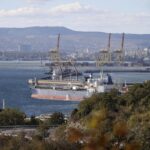Blue-green algae is flourishing in Lough Neagh, which is also Ireland’s largest lake. There is more than one culprit behind the devastation.
An algal bloom resurgence at Lough Neagh, the biggest freshwater body in the United Kingdom and Ireland, has renewed public debate about its ownership and management.
For months, extensive blue-green algal (cyanobacteria) growths have led to animal deaths, human sickness, temporary beach closures, and the permanent closure of businesses along the lake and connecting waterways. Regional agencies say the summer’s bloom reached “levels not seen since the 1970s”, while lough residents say they were the “worst” they have ever seen.
The contamination has prompted fears about the safety of drinking water in the region and the future survival of key industries at the lough.
Several grassroots initiatives have sprung up in response to the lough’s devastated condition.
There have also been attempts to recall Northern Ireland’s assembly – part of the region’s collapsed power-sharing arrangements, also known as Stormont – to address the ongoing “crisis” at one of Europe’s most important freshwater bodies.
What is Lough Neagh?
Lough Neagh is the largest freshwater body by surface area in the UK and Ireland, covering nearly 400 square km (154 square miles), an area greater than the size of Malta. It supplies more than 40 percent of Northern Ireland’s drinking water and more than half of its capital city, Belfast.
About 91 percent of the 4,550-sq km (1,756 sq miles) catchment area lies in Northern Ireland, says John Spence, a retired researcher specialising in aquatic systems management.
“Altogether, 43 percent of the land area of Northern Ireland drains into the lough, from which the waters flow out northwards to the Atlantic Ocean via the lower River Bann.”
The lough is a rich source of Irish mythology, having inspired many writers and artists. Its landscapes have been immortalised in verse by Nobel Laureate Seamus Heaney, who grew up by the northwest tip of Lough Neagh and the neighbouring Lough Beg.
Also, evidence of Ireland’s earliest settlements has been found along its adjoining rivers.
Why is it turning green?
So what’s causing the extensive growths – referred to as “blue-green algae” thanks to its green and brilliant-blue appearance, which are a kind of photosynthesising bacteria – that have swept the lough this summer? The primary source is exceedingly high levels of phosphates and nitrates, along with other contaminants.
The key culprits: two-thirds of the phosphate that ends up in the lough originates from slurry and other run-off from surrounding farmland, while 24 percent comes from human sewage discharged into the lough’s catchment area. Other factors, including industrial sand extraction, may also be accelerating the eutrophication (nutrient-loading) process that has allowed the algae to flourish.
One study suggested that climate change may, additionally, be a contributing factor.
The wettest July on record in Northern Ireland, followed by prolonged spells of warm weather in August and early September, have served as more immediate triggers for the surge in algal growths.
Les Gornall, an expert who has worked on the environmental impacts of slurry for decades, explains that the lake’s “hypereutrophic” classification made the algal blooms nearly inevitable. Hypereutrophication results when increasing concentrations of plant nutrients in water bodies lead to increased biological productivity.
“This change resulted from the lake’s response to an influx of nutrients, particularly soluble reactive phosphorus (SRP) and nitrogen,” Gornall said.
According to Gornall, only a “tiny amount of SRP” – phosphorous quantities similar in size to a couple of AAA batteries – is needed to trigger an algal bloom.
“In pollution-free lakes, one would find a concentration of only one or two of these [battery-sized] ‘SRP units’ in the pristine water. In 2023, SRP levels in the [Lough] surged to seven-either units.
“This pollution level elevates the likelihood of a toxic blue-green algal bloom to over 80 percent. Without controls on phosphorus input, this level of SRP will increase and the lough may become unrecoverable.”
Who owns it?
The waters are publicly owned, while there are a number of individual landowners across the lough’s vast catchment area. But Lough Neagh’s bed, soil, and banks are owned by the Shaftesbury Estate, a territorial claim that dates back to the Plantation of Ulster in the early 1600s.
The lough’s ownership has been challenged through a series of disputes that have played out over more than a century.
As recently as the 1970s, the Shaftesbury Estate claimed ownership of the lough’s waters and charged public water bodies for abstraction work. The Estate has since dropped that claim.
Public ownership has been explored several times since the 1960s, with the most recent attempt floundering between 2012 and 2014.
In early October, the 12th and current Earl of Shaftesbury, Nicholas Ashley-Cooper, told BBC NI that he would not “gift” the lough back to the people of Ireland.
Stormont’s devolved governing institutions would likely need to be operational to advance a new public ownership bid. The region’s power-sharing arrangements have been lying dormant for more than 600 days due to an ongoing argument over post-Brexit customs arrangements in the Irish Sea.
How can the contamination be stopped?
A range of public authorities and government departments, as well as Northern Ireland’s civil service, have faced criticism for their slow response to the algae issue.
NI Water, a publicly-owned company that is the only agency responsible for running and maintaining the region’s water and sewage infrastructure, says water drawn from the lough’s three main abstraction points is safe to drink – despite its cloudy appearance, “musty taste” and occasional odour in certain areas.
Some 13 chemical substances are added to drinking water drawn at Lough Neagh during its complex treatment processes, which cost about 28 million pounds (about $34m) for the 2022/23 financial year.
Meanwhile, to begin addressing the situation, Gornall says that phosphorus and nitrogen inputs – which are currently “off the scale” – need to be halved. This would “allow the lake 20 years to naturally leach out the accumulated phosphorus from the lake bed, accrued over decades of excessive nutrient input”.
He added that five key measures are needed to achieve this.
The first is greater publicity and awareness of the processes driving the lough’s poor health. “Implement[ing] stricter regulation” of sewage, agricultural pollution, and other pressures on the lough system is another. Ensuring “responsible manure management and soil conservation to minimise [agricultural] runoff” is also key, Gornall pointed out.
This, he says, will require collaboration between north and south bodies on the island of Ireland – not least because Lough Neagh drains two counties in the Republic of Ireland: Monaghan and Cavan – and should lead towards the development of a coordinated management strategy for the lough. Waterways Ireland, one of six all-island North/South implementation bodies established under the Good Friday Agreement, has never had any jurisdiction over Lough Neagh.
Finally, he said, it is vital to establish a laboratory at Lough Neagh that is able to produce independent, scientifically-robust research that is free from conflicts of interest or interference.
The last major research facility at Lough Neagh, which Gornall worked at and was mainly operated by the University of Ulster at Traád Point along the lough’s northwestern shores, closed in the early 2000s.
Gornall says the research station was “like a microscope,” routinely scrutinising the lough, with “analytical standards that were better than most hospitals”. Its closure, he adds, has contributed to an absence of “scientifically robust and transparent” research data that would inform policy and key decisions affecting the water body.
Source : Aljazeera











